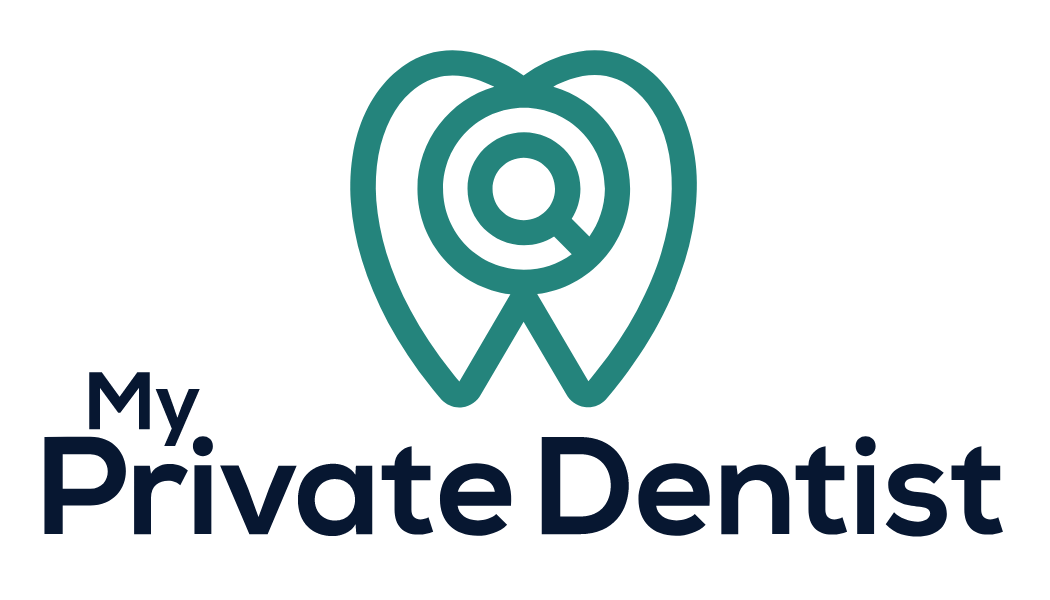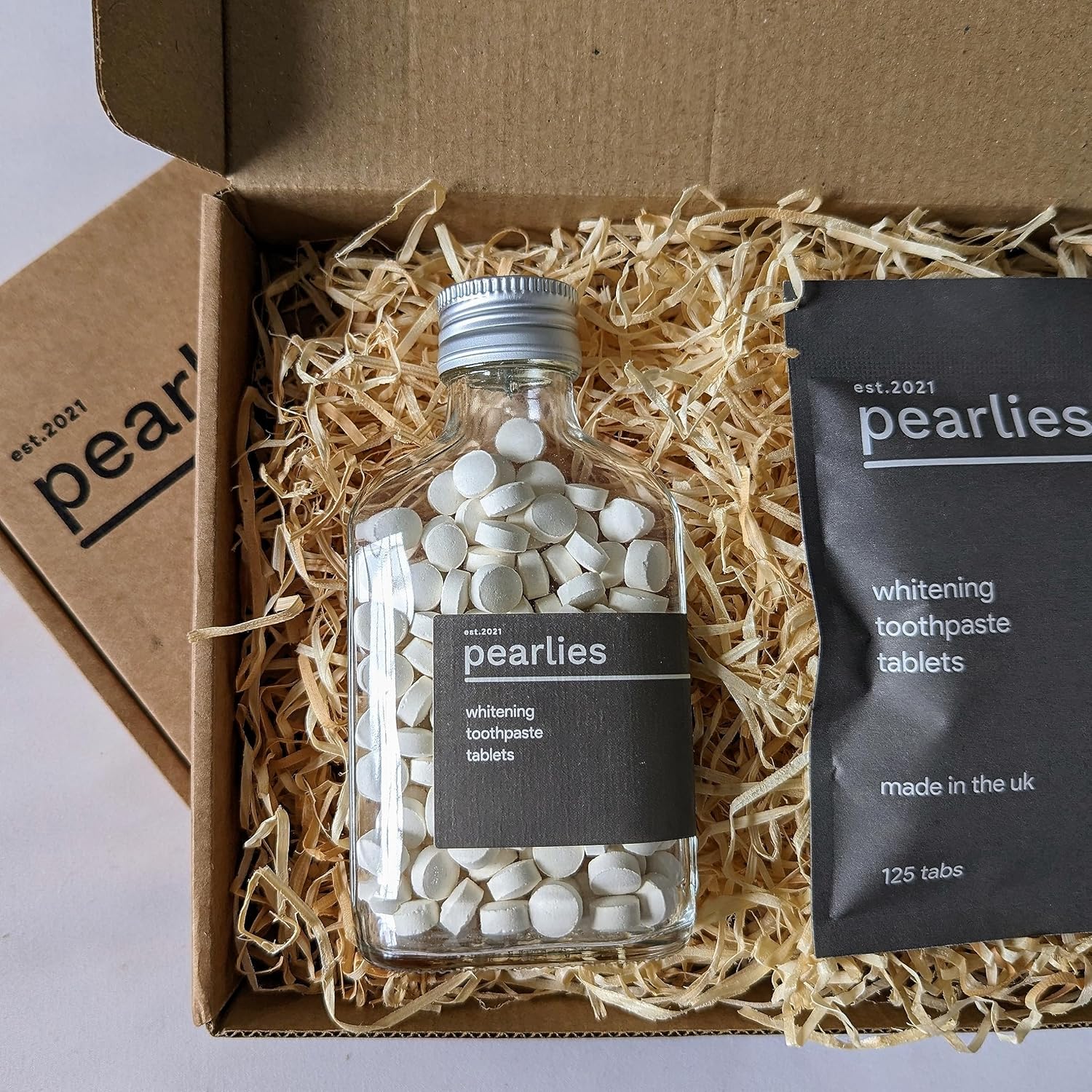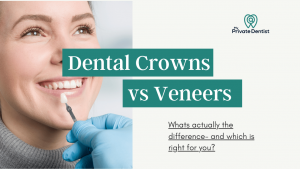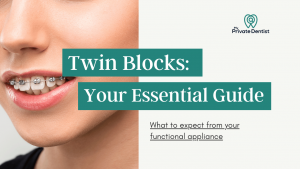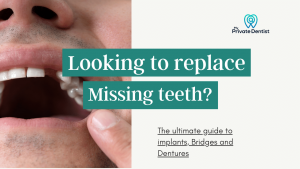As a dentist I’m often asked about new oral health products on the market. Recently one of my patients asked me about the best toothpaste tablets, as they’d seen some videos online.
“Are they any good? Can I replace my toothpaste with them? Do they whiten teeth?”
(Yes. Maybe. No.)
I needed to know how effective they were before recommending them, so I decided to do some research and see what all the fuss was about.
The companies that produce these toothpaste alternatives showed promise by explaining their environmental friendliness compared to traditional toothpaste. But are they any good at keeping your teeth clean and healthy?
In the end, I tried and tested 6 of the toothpaste tablets that Amazon had to offer, and found the overall best toothpaste tablet available right now are the PÄRLA Original Toothpaste Tablets. They’re minty, foamy, convenient and come in a small stylish container.
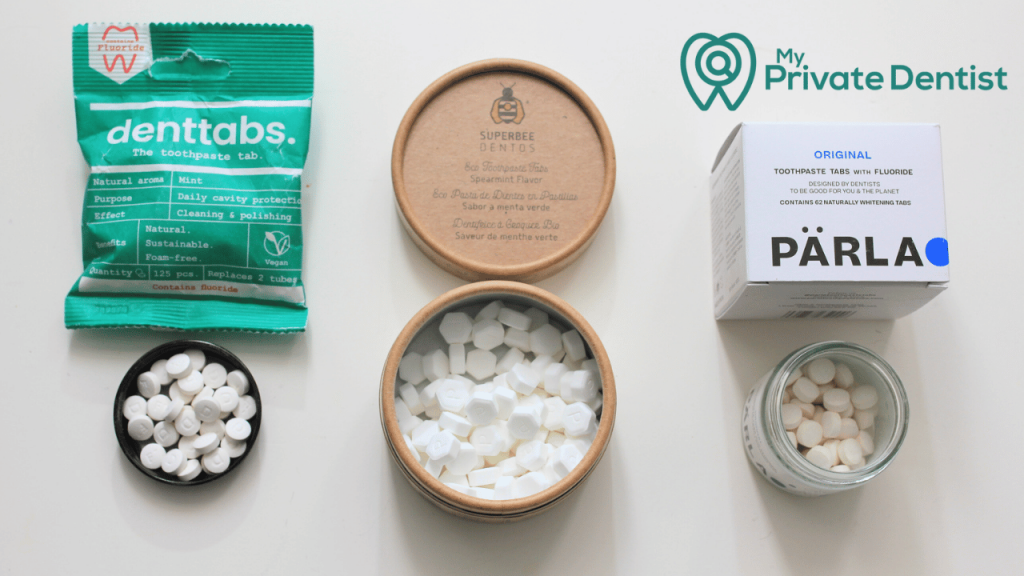
Ingredients such as fluoride are essential, but what else should you look for in these products? I also cover some cases where they should be AVOIDED. Read on to find out more.
What are toothpaste tablets?
Essentially, they contain all the ingredients of traditional toothpaste, but with the moisture removed and compressed into tablet form, making them more convenient to use.
The primary focus, however, is their environmental friendliness compared to regular toothpaste.
What are the benefits of toothpaste tablets?
With no plastic tube and no need to measure out the amount, they offer a perfectly portioned and eco-friendly alternative.
They provide a refreshing clean feeling, mixing with saliva to produce foam to clean your teeth without any waste and less mess, compare to traditional toothpaste.
Just pop one in, chew, and brush away.
The tablets are also suitcase-friendly (no need to separate out your traditional toothpaste into a liquids bag for the airport), and most brands offer convenient travel containers which can be popped in your gym bag etc.
The sleek packaging adds a touch of sophistication to the bathroom countertop for those who appreciate a neater appearance. However, it’s crucial to ensure that these benefits don’t compromise our oral health.
Should I buy toothpaste tablets?
Yes, I think they’re worth a try.
If you’re conscious about sustainability, a good fluoride-containing toothpaste tablet can be used as an alternative to traditional paste. You just have to make sure you pick one you like the flavour and feel of; and that’s where I’m going to help you pick the right one.
Whether they’re good enough that you’ll never have to use a tube of toothpaste again is another question. Traditional toothpaste has years of positive research behind it, proving without doubt its ability to make sure your teeth are kept healthy, strong and free of cavities.
In my opinion, these tablets could be used to replace regular toothpaste once a day, for an extra brush after lunch at work, or be used while travelling.
My 5 Top Picks
Best Toothpaste Tablets Overall – PÄRLA Original Toothpaste Tablets with Fluoride
Best Value Toothpaste Tablets – DENTTABS Teeth Cleaning Tablets With Fluoride
Best Toothpaste Tablets for Flavour – TBRUSH Vegan Toothpaste Tablets
Best Toothpaste Tablets for Remineralisation – Pearlies Remineralising Everyday Toothpaste Tablets
Best Toothpaste Tablets without Fluoride- SuperBee Dentos Toothpaste Tablets
NOTE: Traditional toothpaste comes to around 3p per brush, and is a little cheaper than using a toothpaste tablet.
Best Toothpaste Tablets Overall
PÄRLA Original Toothpaste Tablets with Fluoride
The best marketed on Amazon, I was keen on trying these tablets designed by dentists.
They contain fluoride (the recommended amount 1400ppm) which helps to keep teeth healthy, are SLS free so great for people with allergies, and have sodium bicarbonate for stain removal.
Stylish plastic-free packaging, and the availability of refills, mean that they’re definitely more eco-friendly than traditional toothpaste.
The tablets disintegrated quickly, within 5 seconds of chewing, and were ready for brushing. Personally, I loved the full on experience and found them refreshing. The minty taste is pretty intense initially but gets milder as you brush. After two minutes of brushing, my teeth were clean and plaque free.
Flavour: Mint
Cost per tablet: 11p
Pack SIze: 62 Tablets (1 month’s supply) you can buy refills.
Best Budget Toothpaste Tablets
DENTTABS Teeth Cleaning Tablets With Fluoride
You get double the amount of these tablets, 2 months supply for the same price as Parla. The packaging is much more simple, more like a refill pouch, but you could use your own airtight container to store them. The packaging is made from compostable paper.
They contain recommended fluoride, which strengthens teeth and fights cavities, as well as cellulose for smooth polished finish which is less likely to pick up staining and plaque.
They were pleasant to use giving a strong minty flavour, but didn’t foam up well and were a little more gritty than my top pick. Overall, left my mouth feeling clean and fresh without being overwhelming. Good value for money.
Flavour: Mint
Cost per tablet: 6p
Pack SIze: 125 Tablets (2 Months supply)
Best Toothpaste Tablets for Flavour
TBRUSH Vegan Toothpaste Tablets
T-Brush Toothpaste Tablets come in a low profile glass jar, and you can then follow this up with refill packs which come in paper packaging.
The ones I recommend contain the correct dose of fluoride (they also do fluoride-free). They contain citric acid to aid break down tartar on teeth, and are SLS-free to prevent allergies. The spearmint isn’t too strong and provides a fresh feeling finish. If you’re not into mint, or if you’d like some for kids, you may want to try a fruity option such as orange or strawberry.
I advise patients to avoid the charcoal product as they can be coarse and wear away enamel. Your teeth may look whiter initially because of the contrast, but over time can look yellower due to wearing thin the whiter enamel, showing the underlying dentine more.
Cost per tablet: 7p (Refills 180 for £9.90 = 5p a tablet)
Pack SIze: 90 tablets (1.5 months supply)
Best Toothpaste Tablets for Remineralisation
Pearlies Remineralising Everyday Toothpaste Tablets
Pearlies Toothpaste Tablets come in a lovely gift box, complete with a smart looking glass container to store them free of moisture (which would cause them to soften). The tablets are made in the UK, which reduces the carbon footprint significantly.
They contain hydroxyapatite as well as fluoride, so have a dual benefit in helping to fight cavities and repair tooth structure. Hydroxyapitite crystals are taken up into the enamel structure in order to strengthen teeth. Make sure you don’t rinse out with water after use, to gain maximum benefit of these ingredients.
It has a minty taste, mild but still refreshing, and considerably less foam that some of its competitors which may be preferable to some. 4 months supply refill of 250 tablets is £30, so 12p a tablet, so still a little pricey.
Flavour: peppermint
Cost per tablet: 15p a tablet
Pack Size: 125 (2 months supply)
Best Non-Fluoride Toothpaste Tablets
SuperBee Dentos Toothpaste Tablets
Ethical independent owned brand, sustainable packaging, great brushing experience, and very refreshing overall. Unfortunately lacking one key ingredient: Fluoride. They should be used in conjunction with traditional toothpaste instead of replacing it, which loses the Eco benefits.
It does have sodium bicarbonate for stain removal. Not at all gritty but takes a while to break down, and may be a little too foamy for some, as can be a mouthful. Lovely mint flavour.
Flavour: Spearmint
Cost per tablet: 13p
Pack SIze: 100 tablets (2 months)
How to use toothpaste tablets
Using toothpaste tablets is simple.
Step 1: Wet your toothbrush under the tap. This helps the tablet dissolve and helps create a foamy consistency for brushing. They can be used without water but won’t froth up as much.
Step 2: Put the toothpaste tablet in your mouth. You can place it between your molars or chew it slightly. The goal is to break it down into smaller particles.
Step 3: Start brushing your teeth as you normally would with traditional toothpaste. The tablet will mix with your saliva and create a foamy lather. Brush for at least 2 minutes.
Step 4: Spit out the foam, BUT DO NOT RINSE WITH WATER. Avoid rinsing your mouth to allow the fluoride/hydroxyapitite crystal in the toothpaste to continue working on your teeth.
Tips:
- Follow the recommended dosage. One tablet is typically enough for one brushing session.
- Keep the tablets away from children who may think they’re mints!
- Seal the toothpaste tablet container properly to keep them dry and fresh. Moisture will cause them to soften and dissolving prematurely.
- Refills are usually more cost effective and eco friendly.
Buying guide for Toothpaste tablets
With many variations on the market there are a few things to look out for when choosing toothpaste tablets
Ingredients
Fluoride
As with any toothpaste, as a dentist I consider fluoride to be an essential ingredient which should be in everyone’s oral hygiene regime. Fluoride is essential in remineralising tooth tissue and preventing cavities (1). These tablets provides a reservoir of fluoride which helps to strengthen teeth. Tablets just as normal toothpaste should contain around 1400 ppm of fluoride. Be careful not to ingest a tablets as fluoride consumed in high doses is toxic.
Hydroxyapatite (HAP)
Another ingredient which will actively strengthen you teeth, available HAP crystals in your mouth will be picked up and deposited into tooth tissue. Not quite as effective as fluoride but important none the less (2).
Xylitol
Ingredients which make the surface of the tooth less sticky for both plaque and stains, will help to protect teeth (3).
Sodium bicarbonate
AKA baking soda, removes and absorbs stains, neutralises pH to prevent tooth decay. However, you need to be aware that dental products with sodium or calcium carbonate can be abrasive and damage enamel if overused.
SLS free
Many people have allergies to sodium lauryl sulphate (SLS) which can cause discomfort to oral soft tissues. The tablets I recommend are all SLS free.
Texture
Most the tablets look pretty much the same on the surface, so how do you know what they’re going to be like once chewed. It’s a good idea to read some reviews on what people did and didn’t like about the experience of using the products.
Many patients do not like a gritty texture an as dentists we aren’t too keen on this either as they can damage the tooth surface over time.
I feel most people would like the toothpaste tablets to become foamy, almost more like a soap in order to feel like it can be moved around the mouth, that feeling of toothpaste, bacteria foodstuff coming out once you spit out.
Also as you need to spit but not rinse your mouth with water after use, you need something that you’re happy to leave on your teeth after brushing. If the tablet dissolves well you’re less likely to be tempted to rinse.
Flavours
There are a few different flavours available. My favourite is the peppermint, which tastes the most like toothpaste, and helps me feel like my teeth are clean and my mouth is fresh. Spearmint is another common flavour.
Fruity flavours such as berries are also available to cater to younger tastes. Flavour free tablets are also available for sensitive mouths.
Some also contain peppermint oil to flavour, which is longer lasting.
Cost
An average tube of toothpaste cost around £2.50 and is used 80 times so lasts around 40 days. That’s around 3p per brush.
Toothpaste tablets are much more simple to calculate, divide by two and you get the number of days it will last you. e.g 128 tablets, 64 days, around 2 months. Cost per tablets ranges from around 7p-15p.
Cost can be reduced per tablet using refill packs, and some companies offer a discount if you opt for a monthly subscription.
Sustainability
One of the main draws of toothpaste tablets is that they are more environmentally friendly. Over 300 million toothpaste tubes go into landfill worldwide, every year, so this is an issue that really does need addressing(4). Toothpaste tablets are ready measured out, and the use of eco-friendly to store and transport them leads to reduction of plastic waste.
Refill bags are usually recyclable or compostable.
Plaque removal and cavity protection
I can only say from review online, and my first-hand experience using the tablets about their relative effectiveness, as there are no clinical trials for toothpaste tablets. They just haven’t been around long enough for meaningful research to have been conducted.
Doing our testing, we used plaque disclosing tablets to show the areas that needed brushing. Here’s how some of the toothpaste tablets performed in comparison to normal toothpaste.
{image disclosing}
You can see that when brushing effectively, toothpaste tablets can remove plaque pretty well. You just need to make sure you have a solid brushing technique. And you’ll still need to floss….
Who should AVOID toothpaste tablets
People with worn sensitive teeth: Toothpaste tablets can be more abrasive on tooth enamel which can make sensitivity worse
Kids: Usage requires you to break down the tablet, not swallow it, and then brush. This may be challenging for some children. Most products state not suitable for under 7s. You also need to make sure children do not swallow the tablets, which they may think are mints as they contain fluoride.
My son who is 7 tried one and hated it, finding it tooth gritty and minty. See his review below:
“Wow…”
*screws up face*
“I… er think they’re probably better for adults”
Harris Amini, 7
Dry mouth: Toothpaste has water in which ingredients are dissolved, whereas tablets need to mix with saliva in order to work. If you have little or no saliva they will be difficult to use.
Prominent gag reflex: Might find excess foam a bit of a mouthful.
How we tested toothpaste tablets
On the hunt for answers, I went online and bought a bunch of toothpaste tablets. My wife and I decided to try them out at the same time and jot down our thoughts. We paid attention to how clean our teeth felt and if our breath stayed fresh, comparing it to the usual toothpaste routine.
We didn’t just stop at the basics, though. We are both dentists after all.
We used plaque disclosing tablets to check how well the products really cleaned our teeth. The flavour was a big deal too, with discussions about which ones we preferred. We also considered how the toothpaste tablet bottles looked in our bathroom – what we liked and didn’t like about them.
Finally, We gave the tablets a good shake to see if they’d survive daily handling and travel. We really wanted to see whether these toothpaste tablets could fit into a good daily oral hygiene routine.
Frequently Asked Questions
1. Why switch to toothpaste tablets? Toothpaste tablets offer a convenient and eco-friendly alternative to traditional toothpaste. They come in minimal packaging, reduce plastic waste, and are easy to travel with.
2. Do they clean as well as regular toothpaste? Our testing showed that toothpaste tablets left our teeth feeling just as clean and our breath as fresh as traditional toothpaste. We can’t comment on whether they are as effective at prevent dental problems as there just isn’t the evidence for that yet.
3. Are they easy to use? Yes. Pop a tablet in your mouth, chew or let it dissolve, and then brush as usual. It’s a straightforward process that can fit seamlessly into your oral care routine.
4. Do toothpaste tablets have a shelf life? Yes, they do, but it’s usually longer than traditional toothpaste. Check the packaging for the best before date, and you’re good to go. Say goodbye to squeezing that last bit out of a tube!
Our Verdict
It’s not always we get to test truly innovative patient products, but delving into the world of toothpaste tablets was eye opening. The experience of using them, together with the eco-credentials are certainly a draw. The PÄRLA Original Toothpaste Tablets with their minty refreshing taste were the stand out here product for me, but there are many good tablets out there. Who knows, they may be the future. We just need them clinical trials!
